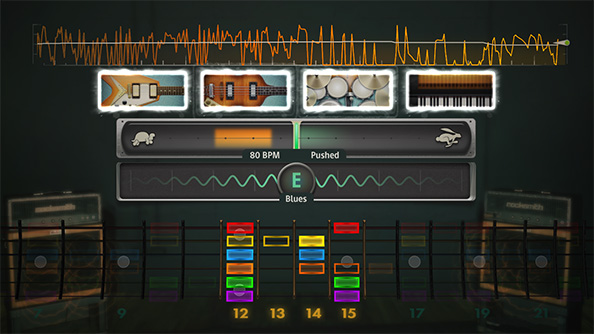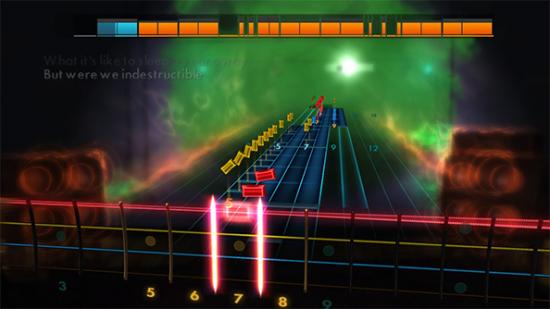Rocksmith is being updated and renovated to become a newer thing called Rocksmith 2014, a game designed to replace and supplant the original game. What’s Rocksmith? It’s that Guitar Hero game where you use a real guitar, plucking and strumming along to a library of licensed songs thanks to a clever cable that interprets your instrument’s output, tracks your performance and turns your PC into a big virtual amp.
Rocksmith works very well, for the record, though it does require that you bring your own instrument. It’s a proven teaching aid for novice guitarists, as well as a comprehensive practice studio for more experienced players. I can personally attest to this, as the original raised my guitar playing ability from ‘how do I even’ to ‘annoying’. Here’s what’s new in Rocksmith 2014.
Perhaps the most significant addition, according to the guitarist who stood next to me during the hands-on session, is the new session mode. This allows you to set up a customisable backing band, comprised of bass, drums, lead guitar and keyboard. Your invisible bandmates will then knock out a few simple chord progressions according to your chosen genre and complexity while you noodle freely on guitar. By playing loudly or softly, the intensity of the backing session will increase or decrease to suit, just like a real backing band, albeit presumably more obedient. I think this is called “jamming” when it happens in real life.
In a more technical sense, some of Rocksmith’s irritants have been stripped away. There are far fewer loading screens and prompts to retune your guitar. Some features that were previously split across different sections of the game can now be accessed on the fly in the pause menu. At any point (usually when you really mess up one part of a song) you can access the Riff Repeater to select a portion of the track to attempt again at your preferred speed. You can dial up and down the difficulty here too, overriding the game’s intelligent, dynamic difficulty setting.
That difficulty setting has found a new upper limit too. If you manage to reach the highest skill level, hitting every on screen note, chord, slide and fourth guitar thing, the on screen instructions will begin to fade out and force you to play from memory. A chilling reminder that this is how actual guitarists play on stage, without ghostly frets scrolling towards their faces.

At the novice end, the Guitarcade set of mini-games has been expanded upon. These games teach techniques by turning your guitar into an arcade controller for dozens of cleverly parodied classics. One game, Ninja SlideN, has you practice slides by controlling a ninja zipping from post to post along one of six strings. The colour of the string denotes the guitar string to slide while the numbered positions of the pillars mark the frets you must slide to and from.
They’re a super polished set of mini-games in themselves, each clearly informed by some genuinely intelligent teaching methodology. In another Guitarcade game, the player shoots down spaceships by playing chords. The chord name appears first, slowly followed by a diagram showing the finger positions, but to play well you must learn to fire as soon the chord name appears, pushing you to remember and catalogue the finger positions of the most common chords. It’s clever. It’s god damn edutainment.
All downloaded songs from the original game will carry over to Rocksmith 2014, as it would be straight-up evil to do otherwise, and although existing owners of Rocksmith can purchase the 2014 edition without the special, magic cable required to play, it will be a full-priced release at launch rather than some sort of cheaper, paid-for update.
Rocksmith 2014 arrives on Steam on October 22nd, meaning your electric guitar will be back out of your wardrobe until at least Bonfire Night. Hey, you could throw it a bonfire, if things don’t work out. That sounds like a rock and roll thing to do.
